What is decentralized finance?
A decentralized NFT marketplace is a platform governed by smart contracts and is more community-driven, with ownership and control distributed among participants.
This type of NFT marketplace is different from the centralized one, which is a platform controlled and operated by a single entity or organization which manages the platform and charges transaction fees.
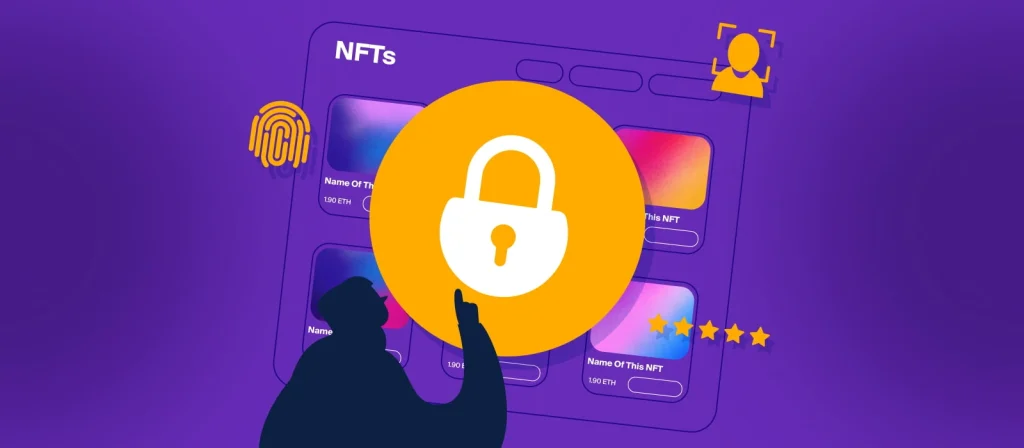
The differences between centralized vs. decentralized NFT marketplaces
| Decentralized NFT Marketplaces | Centralized NFT Marketplaces | |
|---|---|---|
| Pros | Greater Transparency and Security: Decentralized NFT marketplaces use blockchain technology and smart contracts, making it harder for fraudsters to manipulate transactions or data. | User-Friendly: Centralized NFT marketplaces usually offer a more streamlined and user-friendly experience, with easy-to-use interfaces and customer support features. |
| Lower Fees: Decentralized NFT marketplaces often have lower fees and costs since they are designed to be more efficient and cost-effective, with fewer intermediaries involved in transactions. | High Liquidity: Centralized NFT marketplaces tend to have higher liquidity, with larger user bases and more established reputations. | |
| Democratic Approach: Decentralized NFT marketplaces provide a more democratic approach to ownership and control, with decision-making power distributed among participants. | Established Reputation: Since well-known organizations usually operate centralized NFT marketplaces, they often have established reputations that make buyers and sellers more comfortable using them. | |
| Compliance: Centralized NFT marketplaces can ensure compliance with regulations, such as anti-money laundering (AML) and know-your-customer (KYC) laws, providing a sense of security to buyers and sellers. | ||
| Robust Customer Support: Since organizations operate centralized NFT marketplaces, they often have dedicated customer support teams to help users with issues or concerns | ||
| Cons | Complexity: Decentralized NFT marketplaces can be more complex and may require a certain level of technical knowledge or experience to use effectively. | Less Transparency: Centralized NFT marketplaces can be less transparent, relying on intermediaries and third-party service providers to manage the platform and transactions. |
| Lower Liquidity: Decentralized NFT marketplaces may have inferior liquidity, especially in the early stages of development, since they are still building up their user bases. | Less Secure: Centralized NFT marketplaces may need to be more secure, as they may be vulnerable to hacks and other security breaches. | |
| Volatility: Decentralized NFT marketplaces can be more volatile than centralized ones, as the value of NFTs is determined by supply and demand and can fluctuate rapidly based on market conditions. | Higher Fees: Centralized NFT marketplaces may have higher fees, relying on intermediaries and third-party service providers to facilitate transactions. |
In summary, the main difference between centralized and decentralized NFT marketplaces is the platform’s degree of control and ownership. Centralized NFT marketplaces are controlled and operated by a single entity or organization, which manages the platform and charges transaction fees.
On the other hand, decentralized NFT marketplaces are built on blockchain technology and operate in a decentralized manner without the need for intermediaries or third-party service providers. While centralized marketplaces offer a more user-friendly experience and higher liquidity, decentralized marketplaces offer more transparency, security, and control over NFTs.
Top 15 decentralized NFT marketplaces
1. OpenSea
OpenSea is one of the world’s oldest and most popular NFT marketplaces. It was founded in 2017 and has become a go-to platform for buying, selling, and discovering NFTs. With over 4 million items listed on the platform and more than 200 categories of digital assets, OpenSea has something for everyone.
One of the standout features of OpenSea is its user-friendly interface. The platform also allows you to create and sell your NFTs to others. This makes it an excellent option for artists and creators who want to showcase their work and make some money.
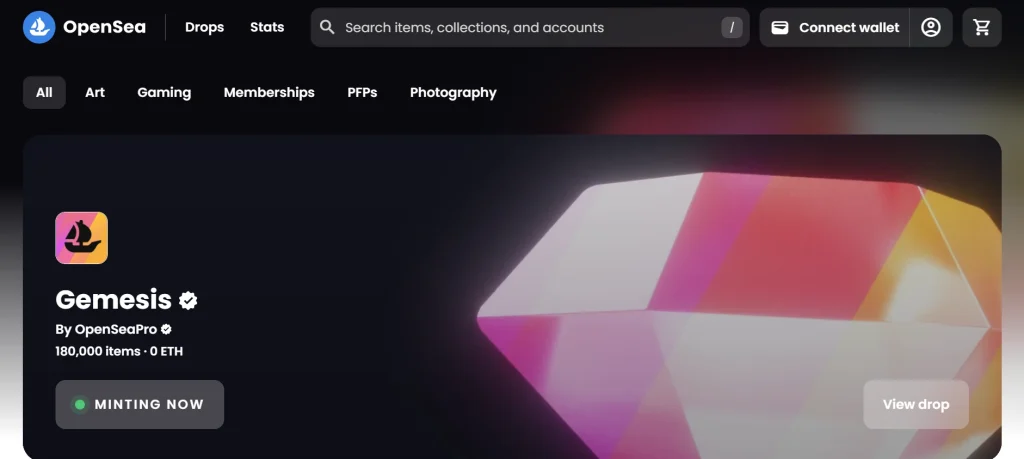
Regarding payment options, OpenSea primarily uses Ethereum, Solana, and USDC. However, they also accept a variety of other cryptocurrencies. It’s important to note that OpenSea does not accept fiat currencies like U.S. dollars or euros.
Another thing to keep in mind when using OpenSea is the transaction fee: 2.5% of every transaction. You also need to pay gas fees when completing NFT transactions with Ethereum.
If you’re looking for a more affordable way to buy and sell NFTs on OpenSea, you can use Polygon. This layer-2 scaling solution allows for faster and cheaper transactions on the Ethereum network.
Pros:
- Vast selection of items
- Accepts various cryptocurrencies
- Integration with other wallets and platforms.
Cons:
- High gas fees during periods of congestion
- Some issues with scammers and fake items
- Potential for market saturation
3. Axie Marketplace
Axie Infinity Marketplace is one of the most popular NFT marketplaces and is the go-to platform for players of the popular blockchain-based game Axie Infinity. It allows players to buy, sell and trade in-game items and unique Axie creatures. Each Axie is unique and can be traded on the marketplace. The marketplace also offers a range of in-game items and land that can be purchased with cryptocurrency.
The marketplace is built on the Ethereum blockchain, and the core currency used is Ethereum (ETH). However, other cryptocurrencies like Wrapped Ethereum (WETH) and Axie Infinity Shards (AXS) are also accepted. The transaction fees are relatively low, with a 4.25% fee for buyers and a 1.25% fee for sellers.
Axie Infinity Marketplace also features a user-friendly interface, making it easy for beginners and experienced traders to navigate.
According to Forbes, Axie Infinity has the highest trading volume among all NFT marketplaces as of 2021, with sales surpassing $2 billion. This reflects the growing popularity of the Axie Infinity game and the market, which is expected to continue to attract more players and collectors.
Pros:
- Unique gameplay elements
- Offers a way to earn cryptocurrency
- Accessible to anyone with an internet connection
Cons:
- The initial cost to purchase Axies
- It can require a significant time commitment
- The game is still in development and subject to change
4. Larva Labs/CryptoPunks
CryptoPunks is a collection of 10,000 unique 8-bit pixel art characters created by the development studio Larva Labs in 2017. Each CryptoPunk has distinct characteristics and traits, making them highly coveted in the NFT market.
The CryptoPunks marketplace is primarily accessed through the Larva Labs website, where you can buy, sell, and bid on individual CryptoPunks. The site shows the latest sales, bids, and offers, making it easy for users to track the market and stay informed.
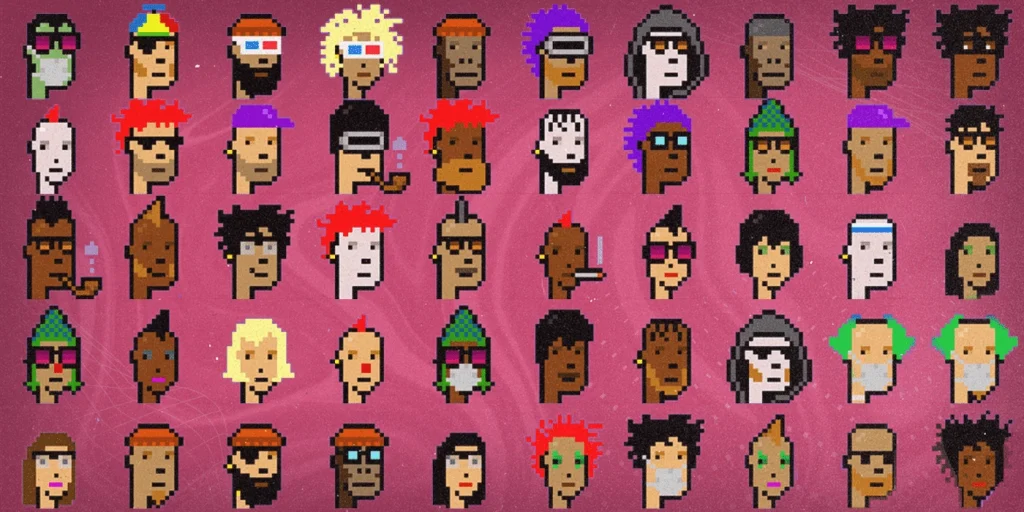
One unique aspect of the CryptoPunks marketplace is its exclusivity. There are only 10,000 CryptoPunks in existence, and as they are sold and traded, the supply becomes increasingly limited. This exclusivity has driven up demand and prices, making CryptoPunks one of the most valuable NFT collections.
Another factor that contributes to the value of CryptoPunks is their historical significance. As the first NFT project, they hold a special place in the history of blockchain and digital art. This has made them popular for collectors and investors who see them as a piece of digital art history.
Pros:
- One of the earliest and most established NFT projects
- Precious and sought-after items
- Only 10,000 original items are in existence
Cons:
- Extremely high prices
- Difficult for newcomers to acquire
- No new items are being created
5. NBA Top Shot Marketplace
The NBA Top Shot Marketplace is an NFT platform that has taken the world of sports memorabilia by storm, offering fans and collectors the opportunity to own a piece of the NBA’s history. It is powered by blockchain technology and was created in partnership between the NBA and Dapper Labs.
The NBA Top Shot Marketplace offers a wide range of collectible moments that feature some of the NBA’s biggest stars. These moments are categorized by rarity, some extremely rare and some valuable. The platform allows users to buy, sell, and trade these moments in a peer-to-peer marketplace.
The NBA Top Shot Marketplace has become the largest NFT marketplace in terms of sales volume. This has attracted much attention from investors and collectors alike, some even referring to it as the future of sports memorabilia.
The NBA Top Shot Marketplace has also been praised for its accessibility. The platform has opened the world of sports collectibles to a broader audience, allowing anyone to own a piece of the NBA’s history.
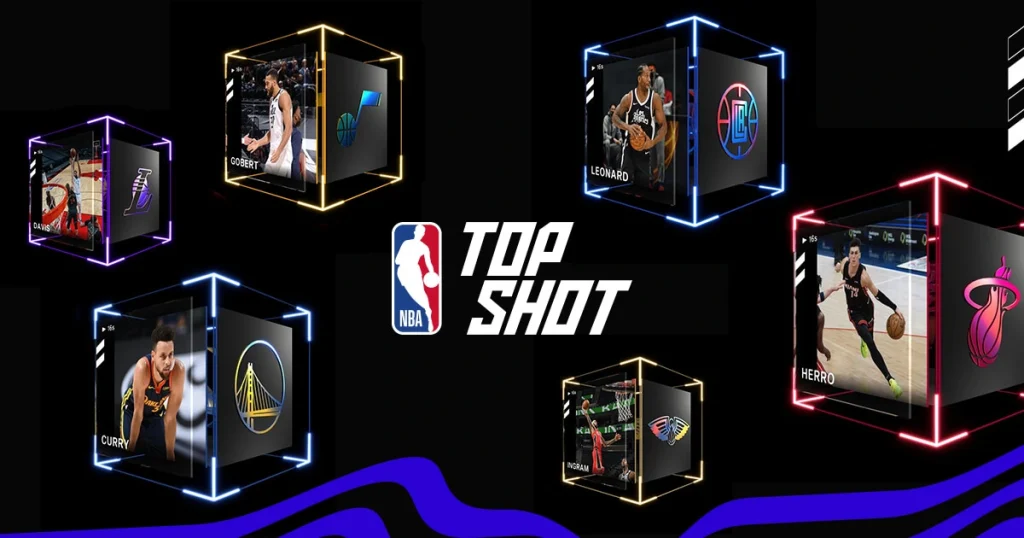
Pros:
- Officially licensed by the NBA
- Offers a new way to collect and enjoy basketball highlights
- Potential for valuable items
Cons:
- Limited availability of some items
- Prices can fluctuate wildly
- Some issues with platform stability and customer support
6. Rarible
Rarible is an open NFT marketplace that allows creators to buy, sell, and create NFTs easily. It was founded in 2020 and has quickly gained popularity in the NFT community. Rarible is built on the Ethereum network, allowing fast and secure transactions.
The platform offers a wide range of digital assets, including art, collectibles, and music. One of the unique features of Rarible is its ability to allow creators to mint NFTs without any upfront fees, which is uncommon in other marketplaces.
Rarible’s user-friendly interface makes it easy for new users to navigate and create their own NFTs. It also has a social media aspect, where users can follow their favorite creators and engage with them through comments and likes.
In terms of fees, Rarible charges a 2.5% fee for each transaction, which is lower than some other NFT marketplaces. Additionally, users must pay gas fees to complete transactions on the Ethereum network, which can vary depending on network congestion.
Pros
- Easy to use and accessible for creators
- Allows for customizable and unique items
- Offers a range of payment options
Cons
- The marketplace can be overwhelming and challenging to navigate
- Potential for low-quality or fake items
- Inconsistent curation standards
7. SuperRare
SuperRare is a popular NFT marketplace that focuses on high-quality digital art. The platform has strict curation standards and only allows top-tier artists to showcase their works.
One of the main advantages of using SuperRare is its focus on high-quality art. The platform also offers a variety of art styles and mediums, including digital sculptures, GIFs, and interactive installations.
However, some can see SuperRare’s strict curation process as a disadvantage. Some artists may find it challenging to meet the platform’s high standards, limiting their ability to showcase their work. Additionally, SuperRare’s fees can be high, with a 10% transaction fee on all sales.
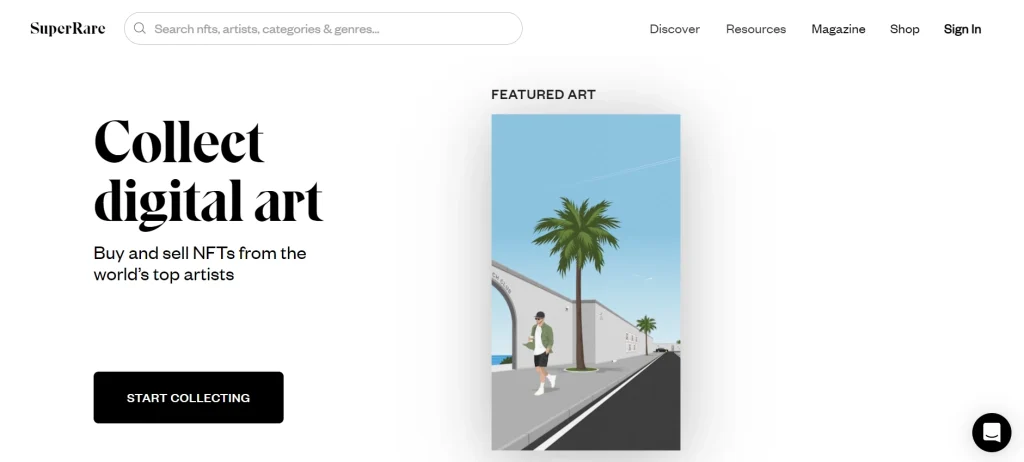
Pros:
- A high-quality curation process ensures the platform only features top-tier artwork
- The active community of artists and collectors
- Exclusive access to limited edition drops and events
Cons:
- High fees, with a 15% commission fee for sales and additional gas fees for Ethereum transactions
- Limited selection compared to other platforms
- Exclusivity can make it difficult for new artists to join the platform
8. Foundation
Foundation is a new, exclusive NFT marketplace promoting art and creativity. The platform is invitation-only, meaning you must be invited to mint NFTs on the platform or purchase NFTs from artists.
Foundation’s platform is simple and user-friendly. Artists can easily mint their creations and start selling them to collectors, and buyers can browse a variety of unique and limited-edition pieces. The platform has diverse art, from digital art to collectible trading cards.
One of the most significant advantages of the Foundation is its artist-centric approach. The platform has become well-known for supporting artists and helping them monetize their work. Foundation also takes a lower commission on sales than most other NFT marketplaces, which makes it an attractive option for artists.
However, one of the cons of the Foundation is its exclusivity. Being an invitation-only platform can make it difficult for new artists to enter the market and for collectors to find new works of art. Additionally, the platform currently only supports Ethereum, which can be a disadvantage for buyers who prefer other cryptocurrencies.
Pros:
- The unique “Invite-only” system ensures a high-quality selection of artists and artworks
- Strong focus on fostering a community, including features like creator grants and social tokens
- Low transaction fees compared to other platforms
Cons:
- Limited accessibility due to the invite-only system
- A small selection of artists and artworks compared to other platforms
- The platform is still relatively new, with a less established reputation compared to more established marketplaces
9. Nifty Gateway
Nifty Gateway is a marketplace for buying, selling, and discovering NFTs. It was founded in 2018 by twin brothers Duncan and Griffin Cock Foster and acquired by Gemini in 2019. Nifty Gateway collaborates with high-profile artists, musicians, and celebrities to create limited-edition NFT drops. It also allows users to purchase NFTs using a credit card, making it more accessible to a broader audience.
One of the unique features of Nifty Gateway is the ability to purchase fractional ownership of certain NFTs, allowing buyers to invest in high-value pieces that they may not be able to afford in their entirety. The platform also offers an auction system for exclusive and rare NFTs, allowing users to bid on coveted items.
Pros:
- Collaborations with high-profile artists and celebrities
- Ability to purchase NFTs with credit card
- Option for fractional ownership of high-value NFTs
- Auction system for exclusive and rare NFTs
Cons:
- Limited selection compared to other marketplaces
- High transaction fees
10. Mintable
Mintable is a user-friendly and versatile marketplace for buying, selling, and creating NFTs. It was founded in 2018 and has become one of the top NFT marketplaces, offering a wide range of digital assets and NFT creation tools.
One of the standout features of Mintable is its easy-to-use NFT creation platform, which allows users to create their unique digital assets without any coding experience easily. Mintable also offers an intuitive marketplace where buyers and sellers can easily transact.
Mintable supports a variety of popular blockchain networks, including Ethereum and Binance Smart Chain, and is compatible with popular wallets like MetaMask and Coinbase Wallet. Users can easily buy and sell NFTs across different networks and platforms.
Pros:
- User-friendly NFT creation platform for non-technical users
- Multi-chain support for easy buying and selling across different networks
- Integration with popular wallets like MetaMask and Coinbase Wallet
Cons:
- Marketplace fees can be high for lower-priced NFTs
- Limited community features compared to other marketplaces
11. Theta Drop
Theta Drop is an NFT marketplace that operates on the Theta Network, a decentralized video delivery network powered by blockchain technology. The platform allows users to buy, sell, and trade NFTs, including limited edition drops and exclusive content from top artists, musicians, and athletes.
Theta Drop boasts several unique features, such as integrating with the Theta Network, which enables faster transaction times and lower fees. The platform also offers a seamless user experience, with intuitive navigation and a variety of payment options. Additionally, Theta Drop has a robust community of users, including collectors and creators, who are passionate about the platform and the potential of NFTs.
However, there are also some potential downsides to using Theta Drop. As a relatively new platform, it may not have the same liquidity and market demand as some of the more established NFT marketplaces. Additionally, the platform is currently only accessible to users who have a Theta Wallet, which could limit its user base.
Pros:
- Integration with the Theta Network for faster transaction times and lower fees
- Seamless user experience and variety of payment options
- A robust community of users
Cons:
- The relatively new platform may have lower liquidity and market demand
- Limited accessibility to users who have a Theta Wallet
12. KnownOrigin
KnownOrigin is a curated NFT marketplace that focuses on high-quality artwork from digital artists. The platform offers a wide range of unique digital artworks, including illustrations, animations, and 3D sculptures.
One of the main features of KnownOrigin is its strict curation process, which ensures that only the best quality artwork is listed on the platform. This helps to maintain the value of the NFTs and protects buyers from purchasing low-quality or plagiarized artwork.
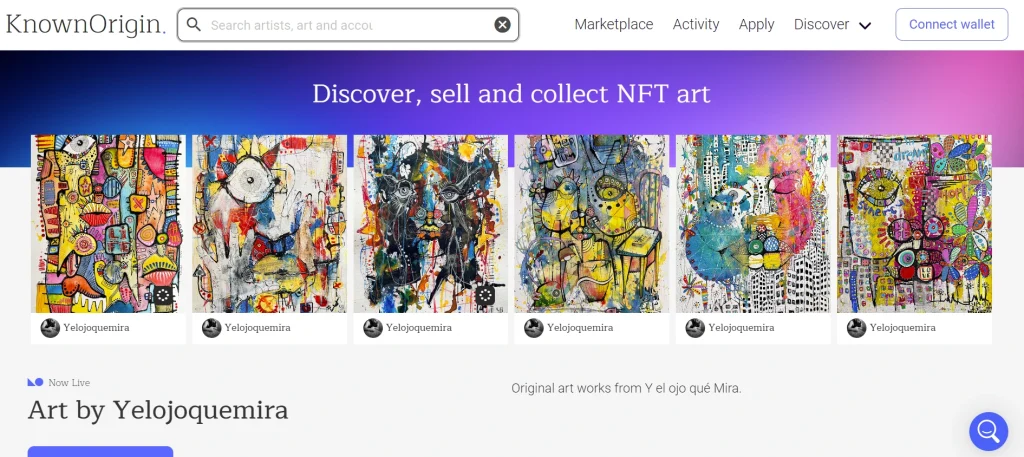
KnownOrigin also offers a royalty program for artists, which allows them to earn a percentage of the sale price every time their artwork is resold on the platform. This creates a more sustainable income stream for artists and incentivizes them to create high-quality artwork for the platform.
On the downside, KnownOrigin has relatively high fees for buyers and sellers compared to other NFT marketplaces. Additionally, the platform is not as well-known as some of its competitors, which may make it harder for artists to gain exposure and reach a wider audience.
Pros:
- High-quality curated digital artwork
- Royalty program for artists
- Maintains the value of NFTs
Cons:
- High fees for buyers and sellers
- Less well-known than some competitors
13. NFTKey
NFTKey is a new NFT marketplace that aims to provide a more secure and user-friendly platform for buying and selling digital assets. It is built on the Binance Smart Chain (BSC), allowing faster and cheaper transactions than other blockchain networks.
One of the standout features of NFTKey is its integration with the Trust Wallet, a popular cryptocurrency wallet that allows for easy management of various digital assets, including NFTs. This integration makes it easy for users to buy, sell, and trade NFTs directly from their Trust Wallet.
Another unique aspect of NFTKey is its emphasis on community-driven curation. The platform allows users to vote on the NFTs they want to be listed on the marketplace, giving artists and collectors a more democratic and decentralized way to showcase their work.
Pros:
- Built on the Binance Smart Chain, allowing for fast and cheap transactions
- Integration with Trust Wallet for easy NFT management
- Community-driven curation provides a more democratic and decentralized marketplace
Cons:
- As a new marketplace, it may have a smaller user base compared to more established platforms
- A limited selection of NFTs compared to more significant marketplaces
14. GEM (OpenSea Pro)
GEM is a curated NFT marketplace that focuses on digital art and collectibles. It offers various unique and rare NFTs, including animations, 3D models, and digital music. The platform aims to create a seamless experience for buyers and sellers, with a user-friendly interface and a simple buying process. Gem.xyz is now OpenSea Pro.
One of the standout features of GEM is its curation process. The platform has a team of experts who carefully curate each piece of artwork, ensuring that only the highest quality NFTs are featured on the marketplace. This helps to maintain the platform’s reputation as a marketplace for premium digital art.
Another critical feature of GEM is its support for creators. The platform offers a range of tools and services to help creators showcase and sell their work, including customizable storefronts, detailed analytics, and marketing support.
Pros:
- A high-quality, curated selection of NFTs
- User-friendly interface and buying process
- Strong support for creators, including marketing tools and analytics
Cons:
- Limited selection compared to more significant marketplaces
- Higher transaction fees than some other platforms
15. Blur
Blur is a relatively new NFT marketplace that showcases emerging artists’ digital artwork. It’s a platform that connects creators and collectors, allowing artists to sell their works directly to buyers without intermediaries.
Blur’s user-friendly interface allows easy navigation, making it an excellent platform for artists new to the NFT space. It also has a feature that allows collectors to discover and follow their favorite artists, giving them a chance to purchase new pieces as soon as they’re released.
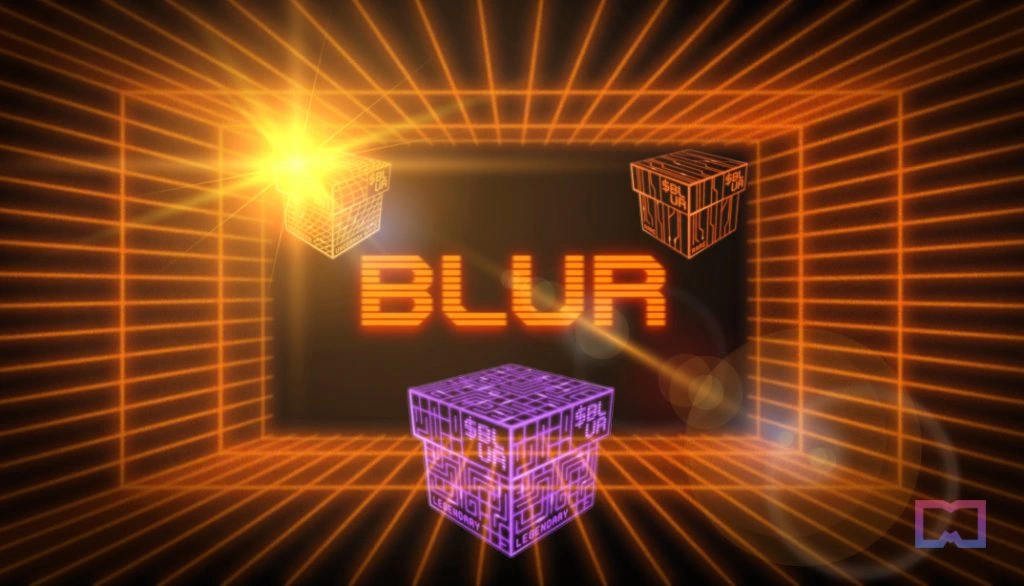
One of the unique features of Blur is its focus on sustainability. The platform is built on the Tezos blockchain, known for its energy efficiency and low environmental impact. Blur also offsets the carbon emissions generated by the creation and sale of NFTs on its platform by donating a portion of its revenue to carbon offsetting initiatives.
Pros:
- User-friendly interface
- Focus on emerging artists
- Sustainability initiatives
Cons:
- A limited selection of artwork compared to more established marketplaces
- The relatively new platform, so there may be concerns about its long-term viability
Frequently asked questions (FAQ)?
There are several factors to consider when choosing a decentralized NFT marketplace that suits your needs.
First, look at the marketplace’s reputation and track record. Check out reviews from other buyers and sellers to see if the platform is reliable and trustworthy. Next, consider the selection of NFTs available on the platform. Does it have the type of NFTs that interest you? Also, look at the platform’s fees and ease of use. Make sure the fees are reasonable and that the platform is user-friendly.
To invest in NFT marketplaces, conduct research on reputable platforms, consider the underlying blockchain, evaluate the marketplace’s user base, security features, and fees. Purchase NFTs selectively based on your investment goals and stay informed about market trends.
Conclusion
In conclusion, decentralized NFT marketplaces are the future of the NFT space. Their transparent and secure infrastructure provides a safe and efficient way to buy, sell, and trade NFTs. You can find the right platform to suit your needs using the list of the top 15+ decentralized NFT marketplaces we’ve provided in this article. Happy NFT trading!
More related posts from our blockchain blog you shouldn’t skip:
- NFT Marketplace Business Model: How Does It Work?
- How To Estimate NFT Marketplace Development Cost
- Top 8 Must-have NFT Marketplace Features That You Need To Know
How useful was this post?
Click on a star to rate it!
Average rating / 5. Vote count:
No votes so far! Be the first to rate this post.




